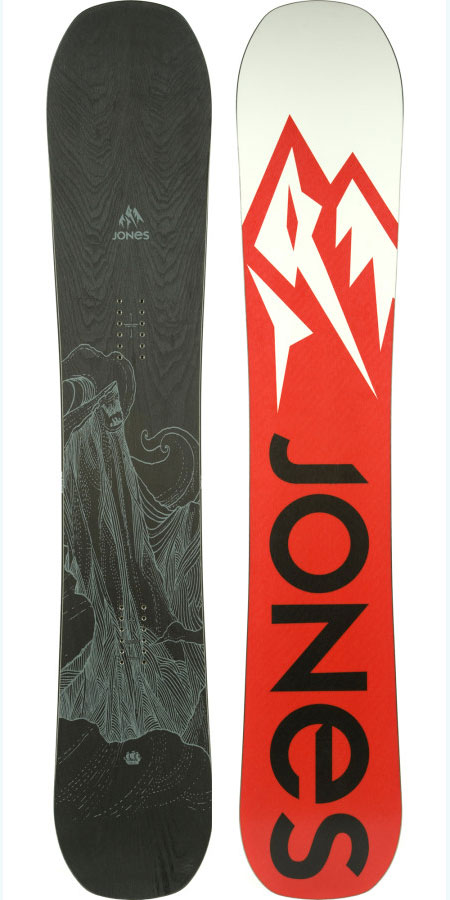 Snowboard: 2012-2013 Jones Flagship 158
Snowboard: 2012-2013 Jones Flagship 158
Dimensions (mm): 290-249-288
Turn Radius: 8.5 m
Setback: 20 mm
Boots: Salomon Dialogue
Bindings: Union Force
Stance: 15/-12, 23.5 inches wide
Days Ridden: 50+
Test Locations: Snowbird
MSRP: $529
[Editor’s Note: Our review was conducted on the 10/11 Jones Flagship, which is the same as the 12/13 Flagship, save the addition of carbon stringers.]
When Jeremy Jones left Rossignol after 19 years of sponsorship to start his own company in late 2009, I found myself excited by what he might produce on his own. When it happened that I had a spot to fill in my quiver for a deep-snow, freeride-specific deck, the Jones Flagship became the immediate frontrunner.
While the Flagship was stiffer and more directional than I’ve historically preferred, its story was just too good to pass up: “This is the Flagship of our line and my life’s work – the ultimate freeride board. Don’t be surprised if you find yourself thanking this board at the bottom of a line.”
Working off the assumption that if it’s good enough for Jeremy, it’s probably good enough for me, I tracked one down in a 158 and couldn’t wait to get it on snow.
Having primarily ridden softer, rockered twins during the prior year, my expectation was that the Flagship was going to a harder charging yet less forgiving ride, and I was right. I typically don’t take new gear into any terrain of consequence, so the first “get to know you” lap on the Flagship was a few days after a storm on Chip’s Run at Snowbird—a long, groomed run with a good variety of pitch, plenty of jibs and drops, and a few little shortcuts with more freeride-oriented terrain. It was quickly clear that the Flagship liked to be ridden fast, making big long-radius turns, and I had a hard time finding a speed limit.
The camber profile on the Flagship, intuitively, makes more sense to me than any other. Jones calls it “Directional Rocker” (rather than the Jones Mountain Twin’s “Camrock”), and the concept is still my favorite: slight camber between the inserts for stability and responsiveness, with relatively dramatic rocker at the tip for flotation in deep snow, and a very slightly rockered tail.

In my opinion, the confidence and stability that I get in any kind of variable snow from having traditional camber underfoot can’t be matched by other hybrid camber profiles (LibTech C2, Nitro Gullwing, Never Summer’s RC, etc.).
The Flagship also offers Mellow Mag, which is a much subtler version of LibTech’s MagneTraction, and it takes effort to actually see the small serrations along the board’s sidecut. All this, accompanied by a progressive but overall stiff flex, accounts for a very stable ride, especially at speed.
Feeling good about my choice, I spent the rest of the next week trying to charge all of my favorite lines at Snowbird in the type of variable terrain that the Flagship was designed for. It was here that I began to find the Flagship’s limitations.

Hi, any rectification to the initial test after riding the board a while, especially concerning the weak points? I saw a couple of vids where people were riding this board doing small turns with no problems.Also treeruns on longer boards were a charm.. Thanx